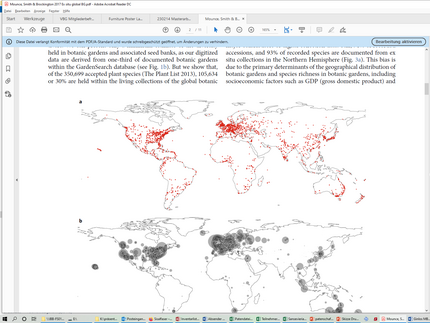Biodiversity and botanical gardens worldwide
The oldest botanical gardens were founded around 500 years ago for medical teaching and research1. European expansion since Columbus (1492) was mainly aimed at gaining access to tropical spices and other plant resources. During the colonial era, botanical gardens thus served primarily to collect and research so-called "exotic" useful plants and to promote their plantation cultivation under conditions of colonial exploitation.2
To this day, these power relations are clearly visible in the worldwide distribution of botanical gardens. They are much rarer in tropical areas than in Europe and the United States, although biodiversity there is considerably greater.3,4 Many tropical gardens are also colonial foundations. Only gradually have they become dedicated to the study and conservation of biodiversity in their regions, as well as to the documentation of indigenous knowledge about it.
References
[1] Wagenitz, Gerhard (2003): Wörterbuch der Botanik. 2. Auflage, Nikol.
[2] Schneckenburger, Stefan ((2010): Auf der Jagd nach dem „Grünen Gold“: Botanische Gärten in der Zeit des Kolonialismus. Biologie in unserer Zeit 40(6): 411-419.
[3] Mounce, Ross; Smith, Paul; Brockington, Samuel (2017): Ex situ conservation of plant diversity in the world’s botanic gardens. Nature plants, DOI: 10.1038/s41477-017-0019-3
[4] Barthlott, Wilhelm; Kier, Gerold; Mutke, Jens (1999): Globale Artenvielfalt und ihre ungleiche Verteilung. Cour. Forsch.-Inst. Senckenberg215: 7-22.

